ePostcard #115: Nightwatch–Sea Turtles at Risk (Part 1)
ePostcard #115: Nightwatch–Sea Turtles at Risk (Part 1)
Nearly all sea turtle biologists, sooner or later, become turtle conservationists …
Peter Pritchard, “The Conservation of Sea Turtles,” 1980
The future of some of the Earth’s most incredible, resilient and ancient species is at risk. Sea turtle conservation, unlike that of many endangered species, is truly a worldwide effort. Sea turtle research, management, and conservation must remain global in scale to create and sustain meaningful change. If we intend to save sea turtles, it quickly becomes obvious that we cannot focus on only one threat, such as reducing light pollution, protecting nesting beaches or preventing fisheries bycatch mortality. As I began to write what I thought would simply be a piece on light pollution and its impacts on sea turtles, I realized that telling the story properly meant traveling back more than 140 million years and acknowledging one of the greatest evolutionary success stories of all time. Along the way, I decided to share a bit of my own backstory in finding a conservation-driven life path that would allow me to share my boundless curiosity about the natural world and its wondrous tapestry of ecosystems.
Growing up in rural New England, I was a woodsy kid who loved turtles—all kinds of turtles. Painted, spotted and wood turtles were my favorite species and seemed the most tolerant of an 8-year old’s catch-and-release efforts. My backyard gave me access to lots of watery places where I could look for turtles, salamanders and frogs. My parents and grandparents were attuned to the idea of “watchable wildlife” long before it became a buzzword in conservation circles. I was pretty clumsy in my Mom’s fishing waders (the toes stuffed with socks), so my Christmas wish for 1959 was a pair of rubber boots. Not only did I get the boots, they gave me a Golden Guide to Reptiles and Amphibians (1953), by Herbert Zim and Hobart Smith. After a couple misadventures with red efts, the “land stage” of the red-spotted salamander, I was told that it was wrong to keep a wild animal as a pet. My father made me a small folding “corral” that I carried around with me so that I could observe whatever I captured before returning it to where I’d found it. I preferred exploring alone, largely because most kids were too noisy and sometimes disrespectful of the creatures I found so fascinating. My “nature girl” tendencies and my joy in tramping through marshes and beaver ponds in my rubber boots, earned me the oft-repeated, one-line ditty: “Odd Aud, odd Aud, half turtle and half frog.”
Many years before I saw my first sea turtle, I was canoeing with my father at dawn in a tidal marsh on Cape Cod. We had just beached the canoe near some dunes when we spotted one of the most beautiful turtles I’d ever seen—a diamondback terrapin—slowly making its way back down to the high tideline. After this small turtle floated out into the bay, we followed its tracks up the beach to a pile of freshly dug sand. We later read that female terrapins come ashore in early summer to dig a nest in the sand in which they lay their eggs—just like their much larger relatives, the sea turtles. In fact, the diamondback terrapin is the only turtle species in the world whose habit is restricted to brackish water (a mix of fresh and salt water). This species, in contrast to the sea turtle, requires periodic access to fresh water to avoid dehydration. The realization that the diamondback terrapin and sea turtles shared a critical adaptation—the specialized salt glands around their eyes that enable them to secrete excess salt derived from their seafood diet—made me aware for the first time that different kinds of adaptations enable an animal to survive in any given habitat.
In the mid-1970’s, while a geology student at the University of Colorado, I was stunned to learn that Dr. Hobart Smith, the author of my first field guide, was teaching a course in herpetology. The class was so popular that I had to petition Dr. Smith to get into it. I told him that I hoped to become a paleontologist and study ancient sea turtles. When I admitted that I’d never seen a sea turtle, he smiled and went over to his bookshelf and loaned me his copy of Archie Carr’s The Windward Road: Adventures of a Naturalist on Remote Caribbean Shores (1956), and Peter Pritchard’s Encyclopdia of Turtles (1979), both men internationally renowned turtle biologists. Dr. Smith told me that their books were my required reading for the course.
Dr. Archie Carr (1909–1987) devoted much of his career to studying the complex life cycles of sea turtles, and is also credited with being the first scientist to focus international attention on the threats they faced, identifying himself as a conservation biologist long before the field was recognized as a discipline. Carr’s research also highlighted a relatively unknown ecosystem of global importance, the Langmuir bands (drift lines) in the open ocean, emphasizing the vulnerability of these convergence zones to marine pollution. Another one of Dr. Pritchard’s books, The Conservation of Sea Turtles (1980), made me aware of the plight of sea turtles (photos #’s 2-3). I would witness firsthand the devastating impacts of marine plastic pollution on sea turtles and seabirds on our Cloud Ridge trip to Midway Atoll (Pihemanu) in Papahānaumokuākea Marine National Monument (Northwestern Hawaiian Islands). My experiences at Midway Atoll also introduced me to the effects of light pollution and the early mitigation efforts by USFWS biologists in protecting vulnerable sea turtles and seabirds.
Sea turtles have been revered by humans for millennia. In fact, many creation stories in various world cultures feature tales of the world being built on the back of a sea turtle. Ancestral turtles, in fact, are among the planet’s most ancient reptilian inhabitants, arising during the Triassic period some 220 million years ago. The Chelonidae, which includes both of the two living families of sea turtles, first appears in the fossil record during the early Cretaceous, about 140 million years ago. The oldest known sea turtle—the now-extinct Desmatochelys padillai—swam the oceans when dinosaurs still roamed the Earth. The fossilized skeleton you see below (Photo #4) was discovered in 2007 near Villa de Leyva, Colombia by an amateur paleontologist and her two brothers. Dr. Edwin Cadena, a researcher at the Senckenberg Research Institute and Natural History Museum in Germany, and Dr. James Parham, an assistant professor of geological sciences at California State University were asked to identify this sea turtle fossil in 2015. To determine its age, the researchers examined the invertebrates, in this case ammonites, preserved in the rocks and sediment that surrounded the fossil skeleton. Ammonites were widespread throughout the Cretaceous period and were well dated. The painting of the Desmatochelys sea turtle and the ammonites associated with it (photo #4) is a science illustrator’s best interpretation of what this extinct sea turtle looked like. The researchers pronounced Desmatochelys to be the oldest sea turtle specimen yet discovered, dating back to the Cretaceous period, between 145.5 million and 65.5 million years ago.
Before the cataclysmic events that defined the Cretaceous-Tertiary Extinction, there were probably dozens of specialized sea turtle species living in different oceanic habitats around the world. Whatever caused the ultimate demise of nonavian dinosaurs 65 million years ago, we know that several marine reptilian groups were spared, including the crocodilians and sea turtles One of the intriguing questions still challenging paleontologists is how the sea turtles, which as a group have changed very little since those extinction events, managed to survive the changes that transformed the ancient world. Is it possible that their ability to dive deep and swim fast might have given them an edge over terrestrial species? We’ll never know for certain. By the early Cretaceous, the elongation and broadening of the sea turtle forelimb into a “wing” well-suited for “flying” underwater was already part of their anatomical structure. To power-stroke through water efficiently, modern sea turtles, just like their ancient relatives, have large and strong front flippers that act like paddles to propel them forward, while the smaller back flippers function as rudders to help them steer. In females, the hind flippers have another purpose as well—they are used to dig an egg chamber in the sand when they come ashore to nest.
What all sea turtles have in common is that they rely on beaches for nesting. Each year, millions of female sea turtles head in from the open ocean to lay their eggs along the coastline. I was excited to learn recently, in a 2019 issue of the journal Quaternary Research, that an old Cloud Ridge colleague and one of the foremost fossil trackway experts in the world, Dr. Martin Lockley (University of Colorado Denver), is the lead author of a study describing the first fossilized baby sea turtle trackways ever discovered. Lockley was part of an international team of researchers, which includes his co-authors, Drs. Jan de Vynck and Charles Helm (both with the African Centre for Coastal Paleoscience at Nelson Mandela University). These fossilized hatchling trackways, dating back about a 100,000 years to the Pleistocene, were discovered in South Africa, in an area called the Cape South Coast, which stretches eastward along the coast from Cape Town. The trackways were originally spotted by Jan De Vynck and his colleagues on a large sandstone rock surface in 2016 (photos 11-13). There were seven nearly parallel trails, which suggested that a flurry of hatchlings emerged from a single point of origin (the nest?), and the team deduced that the hatchlings had been heading southwards, towards the sea. The researchers suggest that the two distinctly different trackway patterns resemble those made today by hatchling loggerhead and leatherback turtles. They believe the tracks were preserved after wind blew dry sand over wet, preserving the imprints. “It’s kind of amazing that the turtles would make these tracks for just literally a couple of minutes and the fossil record has captured this very unique activity,” Martin Lockley said in an interview. “It’s literally the first steps these animals take.”
Imagine this Pleistocene scene—a clutch of sea turtles hatching on South Africa’s southern coast 100,000 years ago. Emerging from eggs buried in sandy nests and breaking free of the soft, milk-colored shells, just like their modern counterparts, the hatchlings begin their clumsy, determined scramble towards the shoreline. If the hatchlings are successful at avoiding being snatched up by an aerial or beach-roving predator, they might just make it to the next stop on their journey. The ocean, which offers refuge from land-based threats, has more than its share of hungry predators waiting. Once in the water, however, the sea-turtle hatchlings are remarkably agile as they fly through their watery home. Now, think about this. In the blink of an eye, humans have become a geological force, driving countless species to the brink of extinction. Six of the seven species of sea turtle that inhabit Earth’s oceans today—leatherback, loggerhead, Kemp’s ridley, green, olive ridley and hawksbill—are found in every ocean except the Arctic and Antarctic. The seventh, the flatback, lives only in the waters around Australia. All sea turtle species, with exception of the flatback, are listed as vulnerable to extinction under the IUCN’s Red List and threatened or endangered on the U.S. Endangered Species Act. The clock is ticking for an ancient species …
#1. Photo Credit (top of page):
Don McLeish/NOAA. Hawksbill Sea Turtle off nearshore waters of Lahaina, Maui.
Caption: This hawksbill has a GPS-linked satellite tag which allows NOAA researchers to track its movements helping us to understand home range and critical habitat for their recovery.
Quote by Peter Pritchard: Dr. Peter Pritchard, who died on February 25, 2020, leaves behind a 50-year legacy of global conservation. He was world-renowned as an authority on the biology and conservation of turtles and tortoises. Founder of the Chelonian Research Institute (CRI) in Oviedo, Florida, Pritchard’s work took him to more than 100 countries where he conducted extensive field work with turtles on all continents and many remote islands. He established a permanent field station for turtle conservation in northwestern Guyana. Dr. Pritchard worked closely with the Arawak people of Guyana for many years, instilling a more protective attitude toward the wildlife species, especially marine turtles, upon which they depend. In 2017, he was presented the Archie F. Carr medal from the Florida Museum of Natural History at the University of Florida. He was fluent in Spanish and French and is published in both of those languages. He authored 14 books, most notably “The Encyclopedia of Turtles.”
click images to enlarge
Photo #2 Caption: This wonderful image, offered in memory of Dr. Pritchard, captures the renowned turtle biologist in his element near the Guyana field station in Guyana, assisting with the recovery of a depth sounding device from a leatherback sea turtle. The leatherback is not only the largest living sea turtle, it is the deepest-diving of all seven species, and is capable of reaching depths of 3,000 ft. Of the air-breathing vertebrates, only the elephant seal and the sperm whale can dive deeper.
#3. Photo: Caption: Dr. Pritchard “lying guard” as hatchling leatherback turtles emerge from their nest.
#4. Photo Credit: Courtesy of PaleoBios/Cadena (Dr. Edwin Cadena)
Caption: As you can see here, the fossilized Desmatochelys padillai turtle skeleton is almost completely preserved and was discovered in Villa de Leyva, Colombia, in 2007, but not formally described until 2015. The researchers pronounced it to be the oldest sea turtle specimen in the world, dating back to the Cretaceous period, between 145.5 million and 65.5 million years ago. To determine the age, the researchers examined the invertebrates, called ammonites, preserved in the rocks and sediment around the turtle. According to Dr. Parham: “Though the specimen is at least 120 million years old, the turtle doesn’t look like an ancient species that was early on in its evolution, and instead is very specialized, which suggests there could be older sea turtles still to be found.”
#5. Illustration Credit: Jorge Blanco; PaleoBios. 32(1); eScholarship.org/uc/item/147611bv
Caption: Artist’s conception (painting) of the extinct sea turtle Desmatochelys padillai (Courtesy of LiveScience).
#6 Photo Credit: Omar Araiza (Baja, Mexico, special to The Denver Post.
Caption: A newly hatched olive ridley turtle, showing a “wing-like” flipper already well-developed for underwater travel, makes its way toward the sea, in Los Barriles, Mexico.
#7. Photo Credit: Andy Collins/NOAA Office of National Marine Sanctuaries.
Caption: Threatened green turtle on Midway Atoll National Wildlife Refuge in Papahānaumokuākea Marine National Monument. Derelict fishing nets, like those seen on this beach are an entanglement hazard to turtles and other marine wildlife. Monument management agencies work to remove such hazards but cannot keep pace with the estimated 57 tons of marine debris entering monument waters each year.
#8. Photo Credit: Tim Donovan/FWC; Public Domain.
Caption: A marked nest on St. George Island, FL. Florida beaches host 90% of sea turtle nesting in the continental U.S. and the largest rookery of loggerhead nesting in the world.
#9. Photo Credit: Randolph Femmer, USGS, Public Domain. Caption: Hatchling tracks in the sand on a Florida beach.
#10. Photo Caption: Hatchling sea turtle heading to the water. Note the track pattern in wet sand.
#11. Photo Credit and Caption: Courtesy of Martin Lockley (University of Colorado Denver). Jan de Vynk, the discoverer of the fossilized hatchling trackway near Port Elizabeth (Still Bay), South Africa. Note that the parallel tracks preserved in the sandstone record the movements of 3 hatchlings emerging from what appears to be a huge nest.
#12: Photo Credit and Caption: Courtesy of Jan de Vynck (African Centre for Coastal Palaeoscience).. These imprints record three hatchling turtles’ march to the sea during the Pleistocene, about 100,000 years ago.
#13. Photo Credit and Caption: Courtesy of Charles Helm (African Centre for Coastal Palaeoscience). Dr. Martin Lockley, renowned fossil trackway expert from the University of Colorado Denver, is shown working on the surface that contained seven sub-parallel hatchling “loggerhead-like” turtle trackways. Note the vertical bedding planes of this huge block of sandstone, which suggests that this fossil trackway may have tumbled down from its original depositional position in the cliff above where researcher Jan de Vynk found it in 2016.
click images to enlarge
To help build global awareness, we would appreciate it if you would share this post with your friends and colleagues. Please choose one of the options below which includes email and print! Thank you.

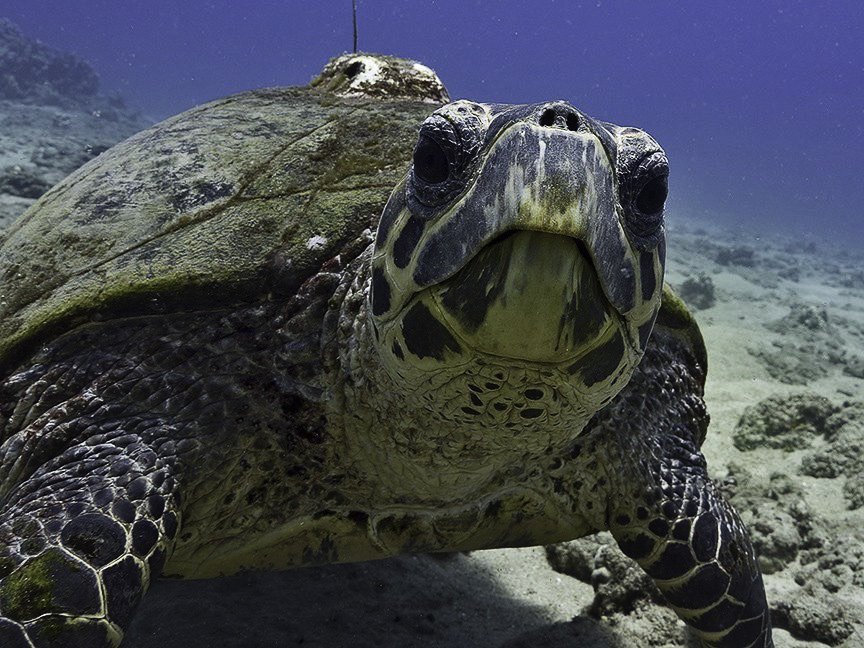

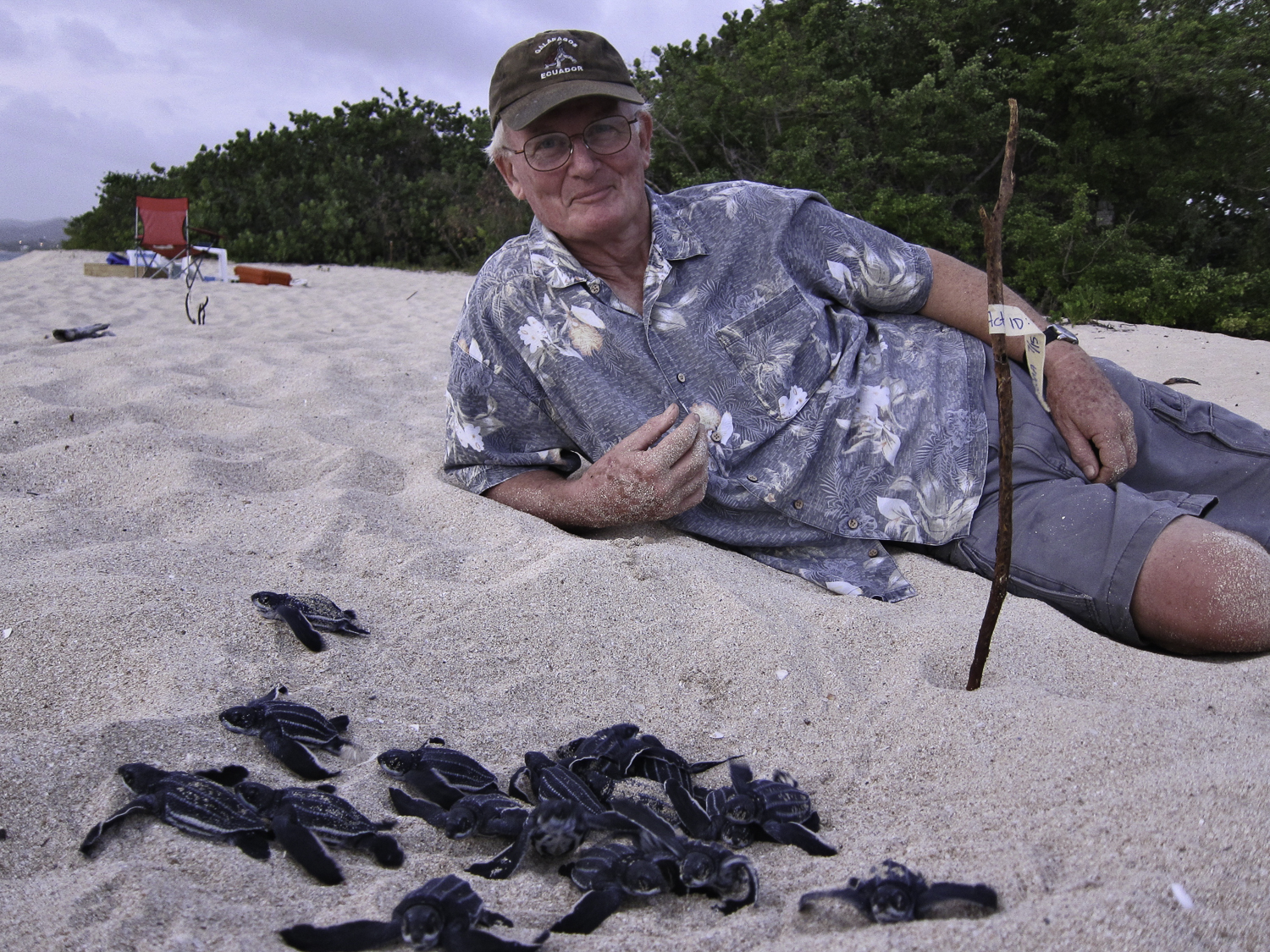

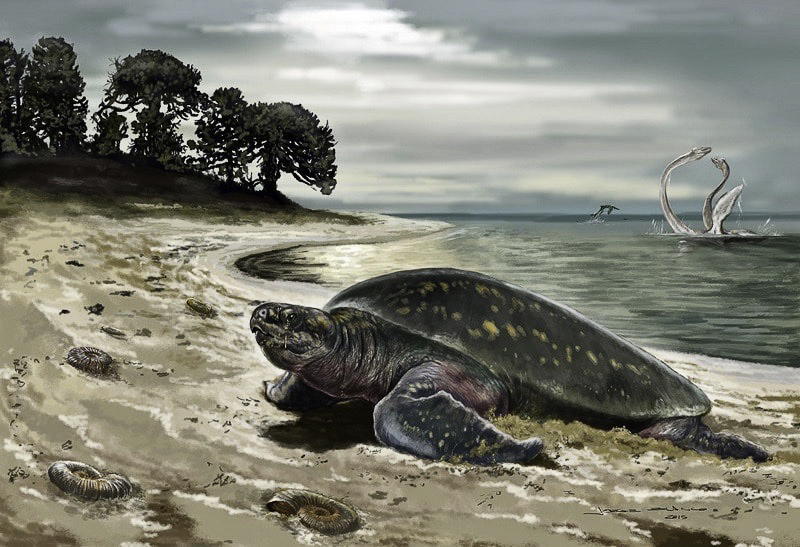
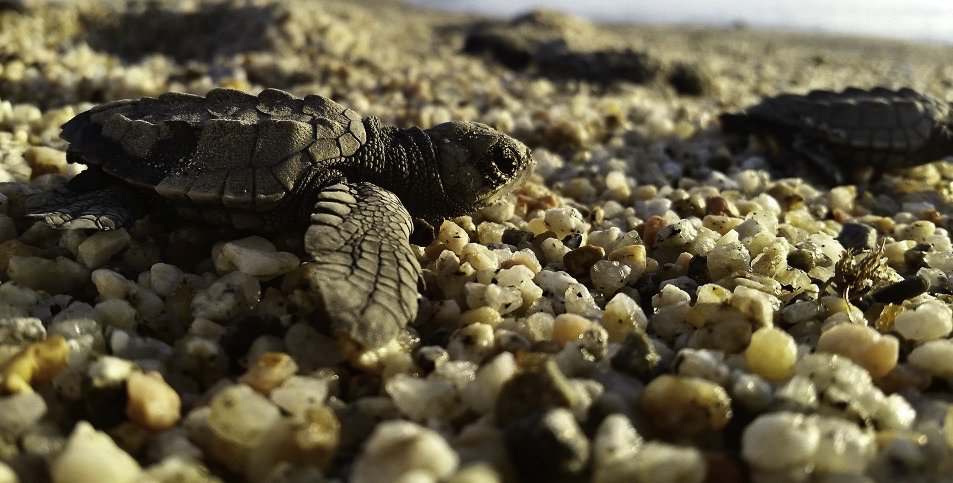

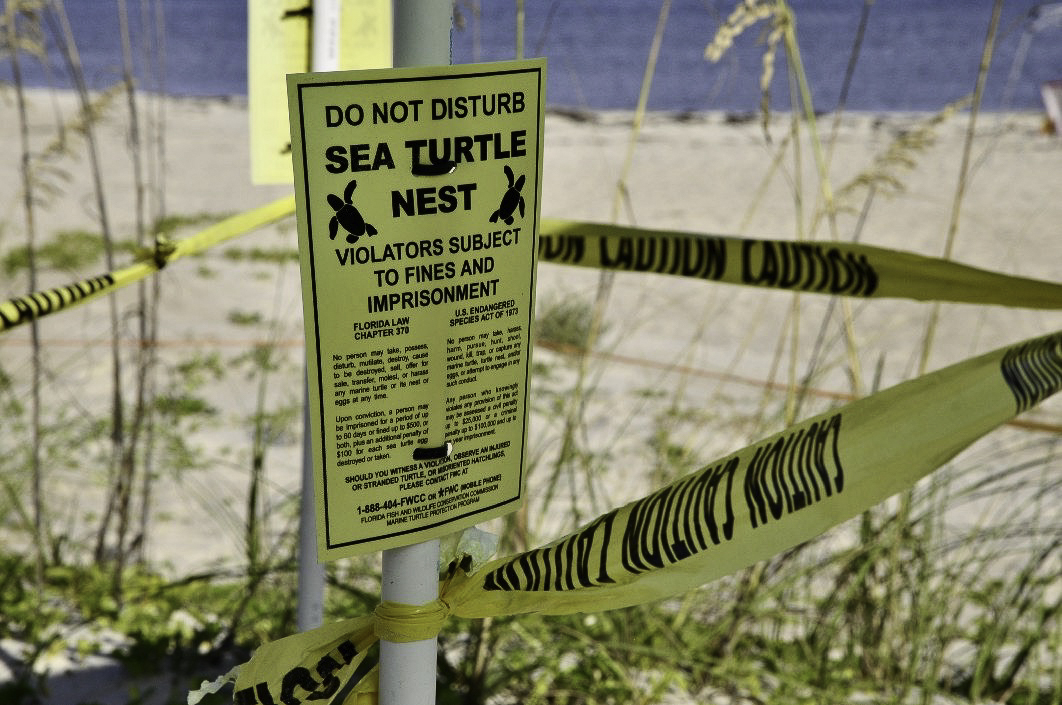
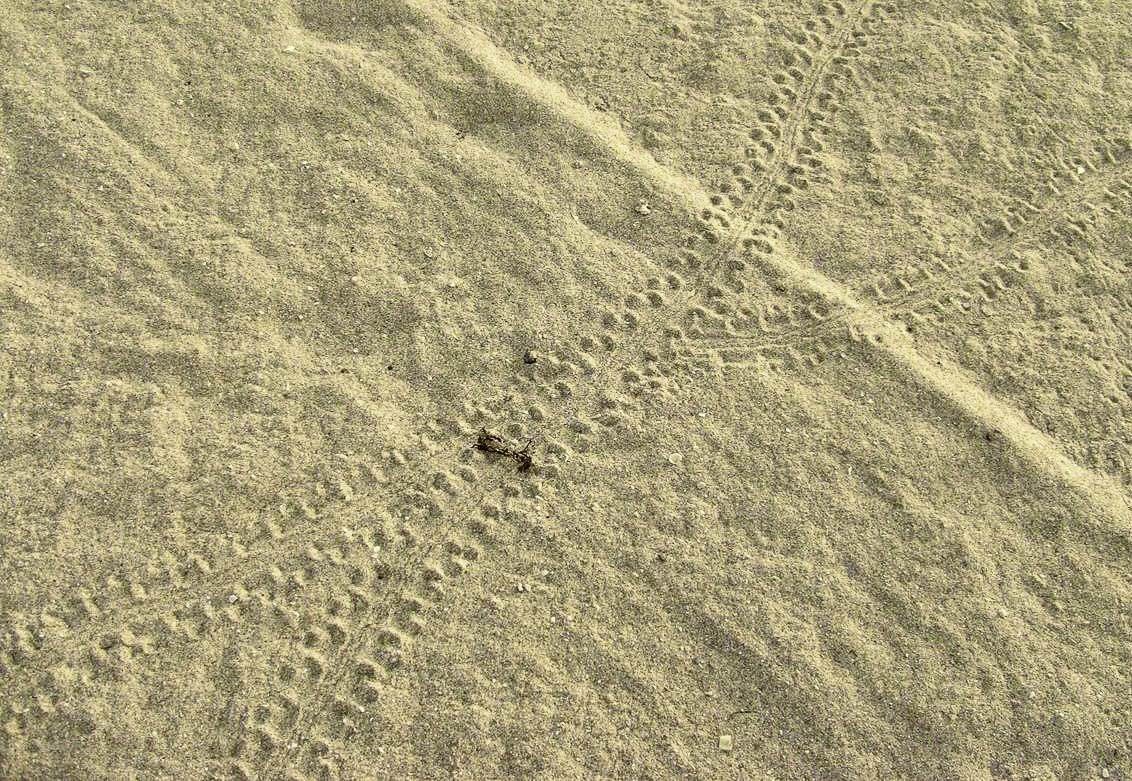
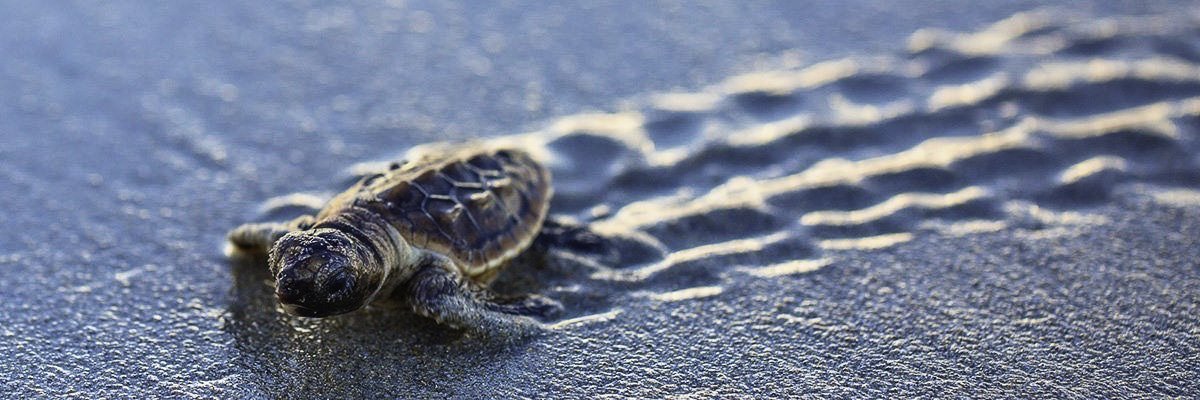
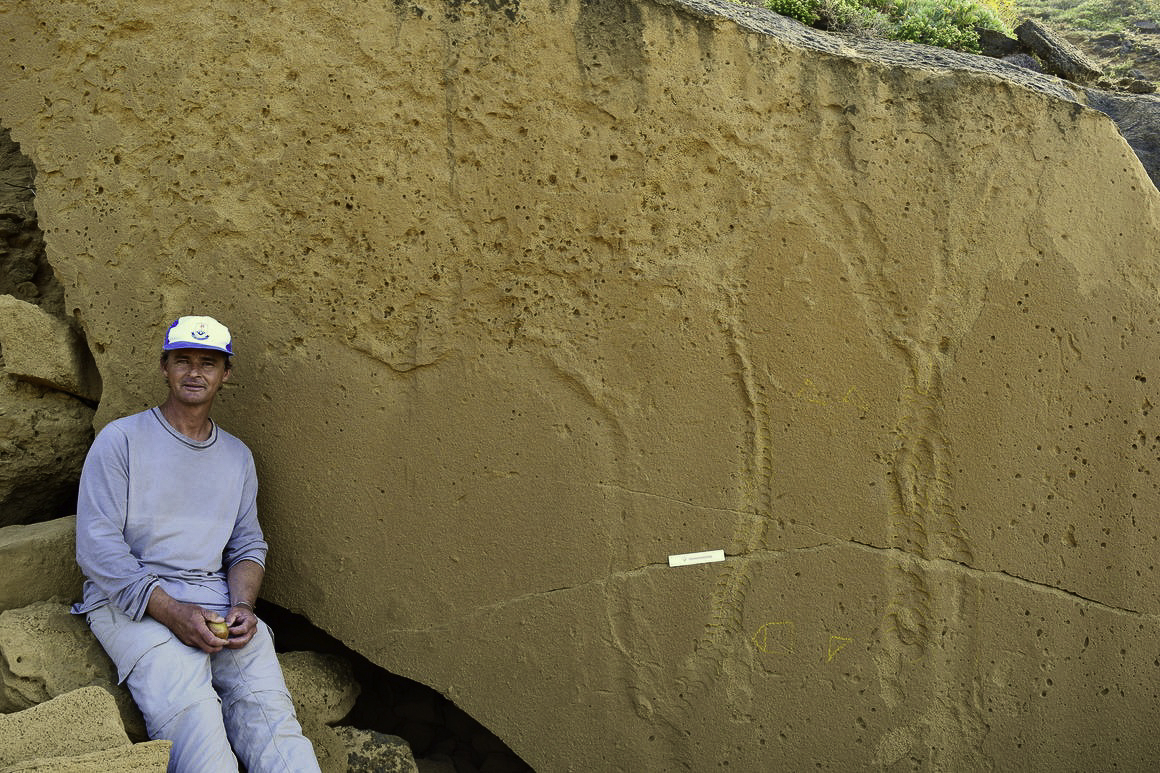
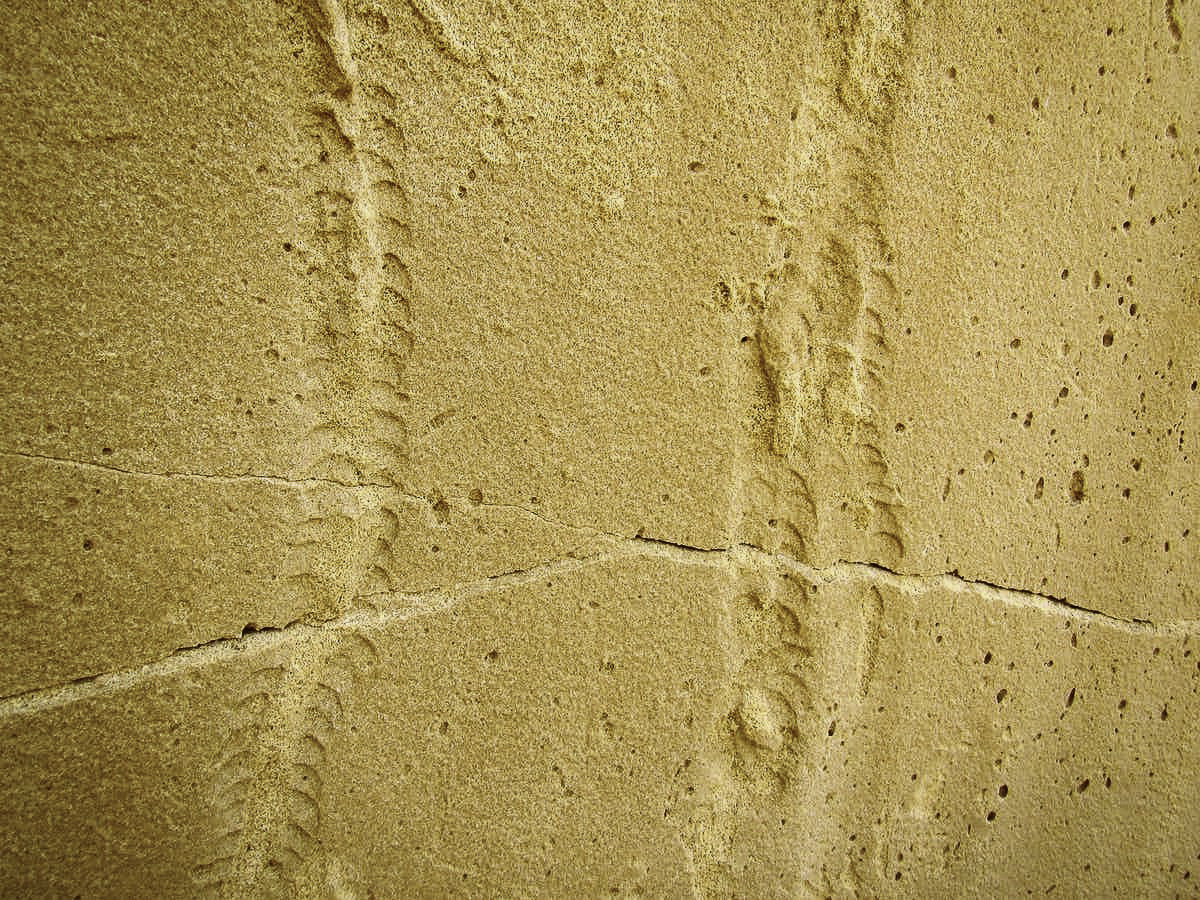
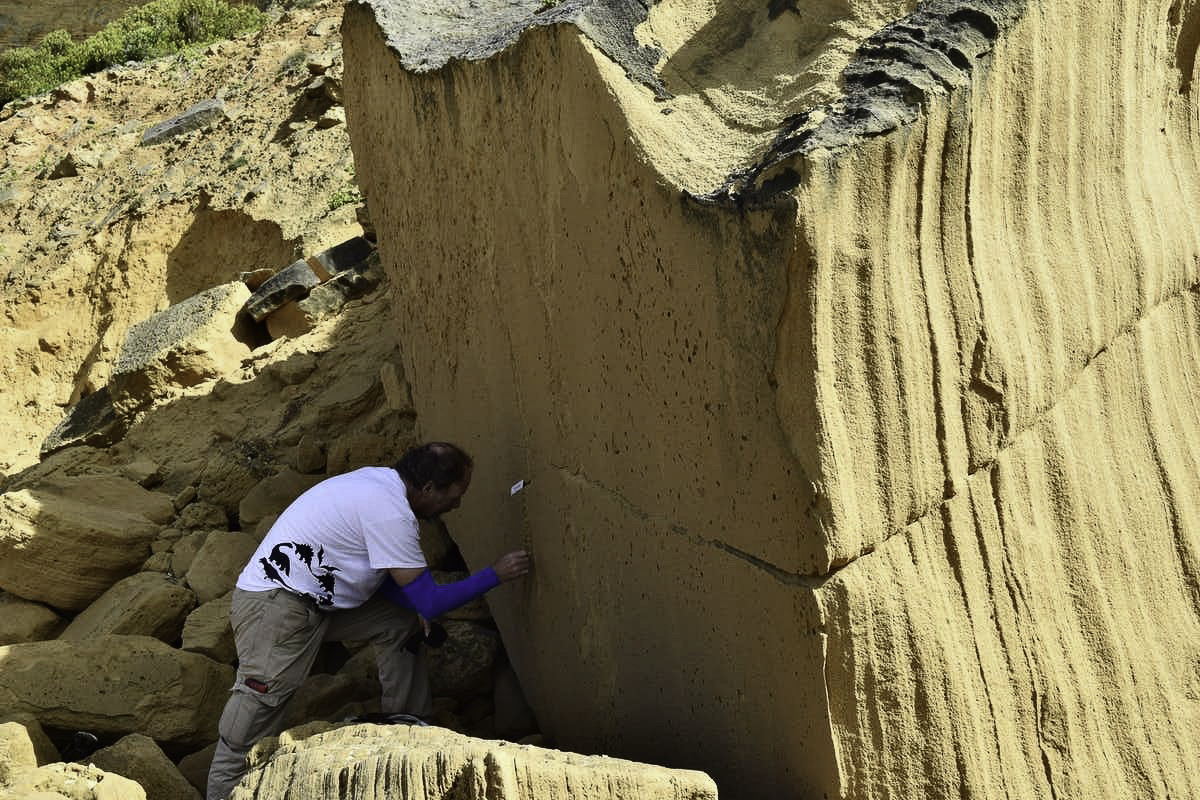
I love Sea Turtles, Thank you for bringing this awareness to the masses, and thank you for the wonderfully adorable pictures!
Wow , fascinating, thank you Audrey. What a amazing creatures..
Love seeing the gorgeous pictures and reading about them – thank you, Audrey.